Bolivia is a land full of wonders and little-known facts. The majestic nature of the mountainous Andes and the adjacent tropical forests, and the illustrious capital city of La Paz, nestled high among the clouds, are not the only things to spark your curiosity. No more than a hundred kilometers outside of La Paz is the Yungas region, a transitional slit of mountainous, hard to access forests. And that is the home of the South American Afro-Bolivian communities, enigmatic descendants of African slaves that, believe it or not, have their own monarchy and a king!
The Difficult Beginnings of the Afro-Bolivians’ Monarchy
Bolivia is home to many diverse ethnicities. Like most of South America, it is filled with numerous peoples that were introduced to the continent with the arrival of the%20
The history of the unique Afro-Bolivians sadly has its roots in conquest and oppression. During the 16th century, when the Spanish conquest of South America was well underway, the conquistadors brought with them many%20
Bolivia, amongst others, was recognized by the Spanish as a nation with a lot of valuable natural resources. Silver ore was the biggest one. Around 1544 AD, the Spaniards began exploiting these rich silver veins of Bolivia, based around%20
Hailing from the warm climates of%20
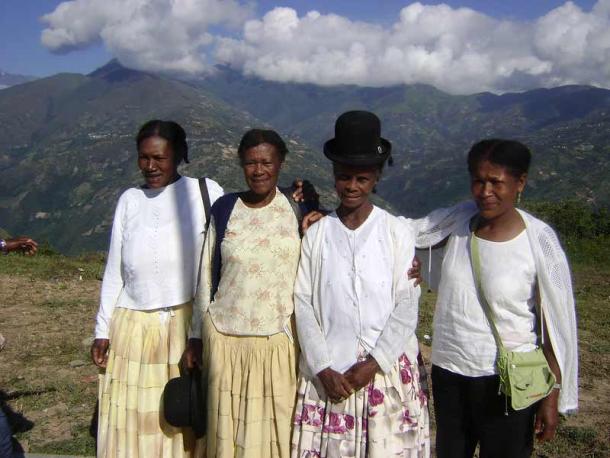
Four tías (aunts) in the high lands of the communities of Chijchipa y Mururata. (Alejandro Fernandez Gutierrez / CC BY-ND 2.0 )
The Spaniards made attempts to fortify their health and increase work output by providing the workers with%20
From roughly 1545, they were bound to their harsh fate in the mines. This lasted all the way until 1825, when the colonial period ended in Bolivia. After their emancipation, many of the Afro-Bolivians relocated from the harsh surroundings where they had worked to the more temperate Yungas region, where their villages are located to this day.
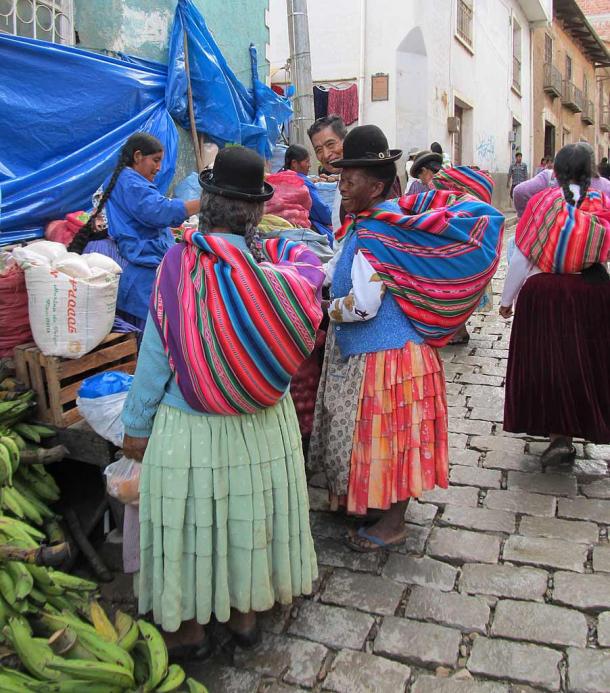
An Afro-Bolivian woman dressed in traditional Andean clothing in Coroico, Bolivia. (Italian boy / CC BY-SA 4.0 )
Afro-Bolivians: The Struggle To Preserve Their Identity
Even after the end of their slavery, most Afro-Bolivians endured a harsh life. Many of them worked in slave-like conditions all the way until 1952 when the National Revolution in Bolivia happened. After that, the Afro-Bolivians could enjoy a somewhat more peaceful life, working the fields like many other normal Bolivians.
Today, there are roughly between 17,000 and 25,000 Afro-Bolivians remaining, and they speak a unique dialect of Spanish peppered with their native African vocabulary. Over the centuries they fought desperately to preserve the traditions and customs they practiced back on the African continent, and a few of those remain in their identity today.
And their own Afro-Bolivian monarchy is without a doubt the most unique part of their heritage, which is often unjustly overlooked.
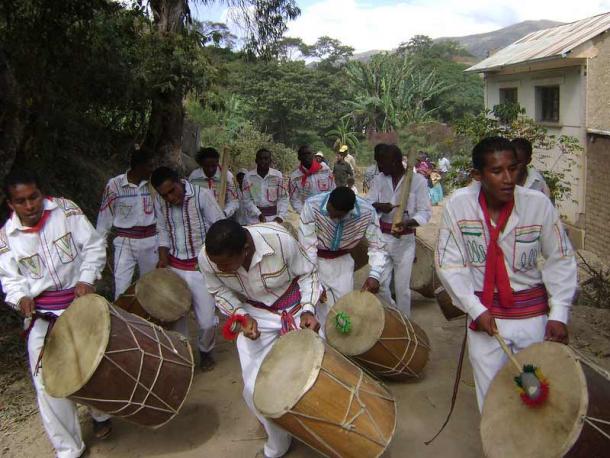
A group of young people from the group Cultural Movement Saya Afroboliviana perforn in the Dorado Chico community. (Alejandro Fernandez Gutierrez / CC BY-ND 2.0 )
Afro-Bolivian Royalty
The Afro-Bolivian Royal House is a completely ceremonial monarchy. It is recognized by the State of Bolivia, and it does not interfere with the presidential republic system of Bolivia.
The cluster of villages in the Yungas region that are inhabited by the Afro-Bolivian communities are the core of this ceremonial kingdom. However, both the Royal House and the kingdom are quite unusual in many ways. One would expect royal luxury and lavishness, but instead one sees ordinary, hard-working%20
Almost all Afro-Bolivians, the king himself included, are poor coca, coffee, and citrus farmers working the land, struggling with poverty and discrimination like many other Bolivians. Their cultural center is the small town of Mururata, but they are also found in significant numbers in the neighboring towns of Coroico, Chicaloma, and Irupana.
Julio Pinedo is not your common king. There is no luxurious silk, no thrones, or halls of%20
The king’s hands are strong but calloused, his clothes threadbare and hardly regal. But there is a certain pride in the man’s stature, a gleam in his eyes that speaks of a centuries old struggle for survival and preservation.
An ornate, gem encrusted royal crown, and a set of elegant, kingly clothes are the only vestiges of his noble lineage, and they are kept safe for special occasions. Julio Pinedo, the current king of the Afro-Bolivian community, was officially sworn in in 2007 by the prefect of%20
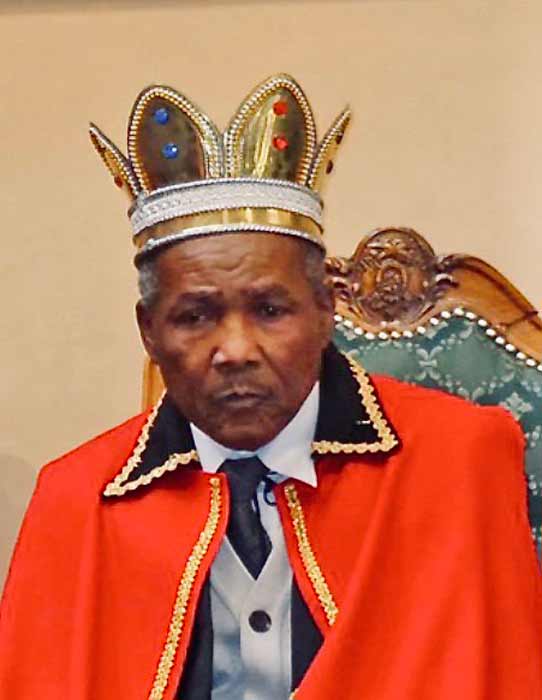
King Julio Pinedo, the current Afro-Bolivian king. (BOCOLOM / CC BY-SA 4.0 )
Julio Pinedo: An Afro-Bolivian King Unlike Any Other
King Pinedo’s forebears come from a long lineage of African tribal nobility. One of his ancestors was Prince Uchicho, who is also the progenitor of the Afro-Bolivian monarchy.
Uchicho’s noble life was turned upside down when the Spanish conquerors enslaved him, and brought him halfway across the world to Bolivia, as a slave. His nobility meant nothing then. Originally, he was a prince of the ancient%20
Moreover, the Kingdom Of Kongo was notorious for its volatile conflicts over succession: reaching the royal throne was a great struggle between competing sons and chiefs. In such a turbulent string of events, young Prince Uchicho ended up a slave.
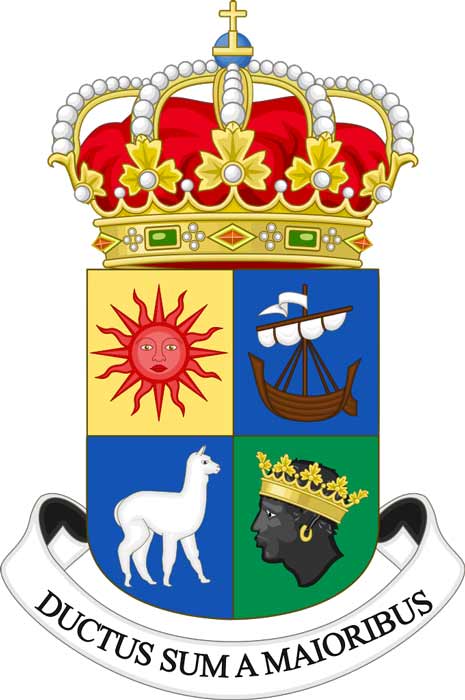
The ≈ of the Royal House of the Afro-Bolivians of Bolivia. (Di (they-them),%20
His toils and travails brought him in the end onto the hacienda (plantation) of the wealthy Marquis de Pinedo in the La Paz department, where he was set to hard work as a slave. However, his noble background was quickly recognized by the other slaves, almost all of them from Kongo. The major clue that gave his origins away was his bodily decoration. Nobles of the Kingdom of Kongo had royal tribal marks all over their torso to distinguish them from others.
He was soon chosen as the leader amongst these African slaves and recognized as a king in this new homeland of theirs, so far away from their native Kongo. According to sources, Uchicho was brought to Bolivia in one of the last slave contingents before the end of the colonial period. He was supposedly crowned as king in 1823, which began the lineage of the Afro-Bolivian monarchy. However, this was not recognized by the state.
He was succeeded by his son, Bonifaz Pinedo. This new king adopted the surname of the plantation owner for his own, and it is the name still borne by the Afro-Bolivian royalty.
Next in line of succession was King Don Jose, and after him was King Bonifacio Pinedo, crowned in 1932. Possibly during his time, a royal coat of arms of the Afro-Bolivian monarchs was established. It displays a quartered shield topped with a royal crown. In each of the four quarters of the shield are these respective symbols, closely tied to the Afro-Bolivian identity: the top left corner shows a red anthropomorphic sun on a yellow background; the top right corner shows a Spanish sailing ship on a blue background; the bottom left quarter shows a%20
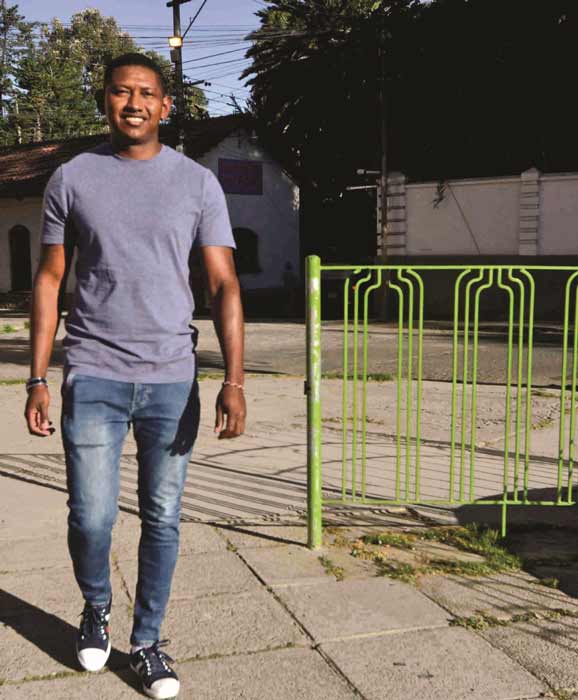
The next Afro-Bolivian king is Prince Rolando Pinedo, who was born in 1995 and has set his aims high by laying great plans for the future of the Afro-Bolivian communities and their monarchy. ( Paginasiete)
Facing the Prospects of Hope
However, when King Bonifacio Pinedo died in 1954, he had no male heir, which put the survival of the Royal House in jeopardy. He was succeeded by his eldest daughter, Doña Aurora, who led the house for roughly 38 years, when there were no Afro-Bolivian kings at all.
But in the end, Aurora did produce a male heir, her oldest son, Julio Pinedo, the current king. He was crowned in 1992, once more giving the Afro-Bolivians a king to continue the noble Pinedo dynasty.
The current king luckily produced a male heir to succeed him in the future. His son, young Prince Rolando Pinedo, was born in 1995 and has set his aims high by laying great plans for the future of the Afro-Bolivian communities and their monarchy. The prince is currently studying law at the Universidad de Los Andes in La Paz, as he prepares for his future role as king. He has repeatedly expressed his mounting ambitions to fight and to “keep pushing forward to make the Afro-Bolivian community more recognized and visible, the way my father has done until now.”
The current king, Julio Pinedo, harbors great hopes for the future of the Afro-Bolivian community. Although his title is largely ceremonial, he still has powers over the Afro-Bolivian community, largely similar to the powers of a tribal chief. Still, there is still a promise of greatness on the horizon.
The entire Afro-Bolivian community hailed the 2006 election of Evo Morales as the 65th President of Bolivia with great joy. Morales is Bolivia’s first ever indigenous president and extremely popular. He vowed to give broader recognition to the struggling minorities of Bolivia.
Morales’ historic referendum that made Bolivia a plurinational state was a new constitution that officially recognized 36 distinct nationalities, including the Afro-Bolivians.
In 2007, the Royal House of the Afro-Bolivian monarchy was officially recognized by the state, and Julio Pinedo was given a public coronation by the highest officials of the La Paz Department. Thus, he was officially recognized as a king in Bolivia, after nearly two hundred years of royal existence in this Andean nation.
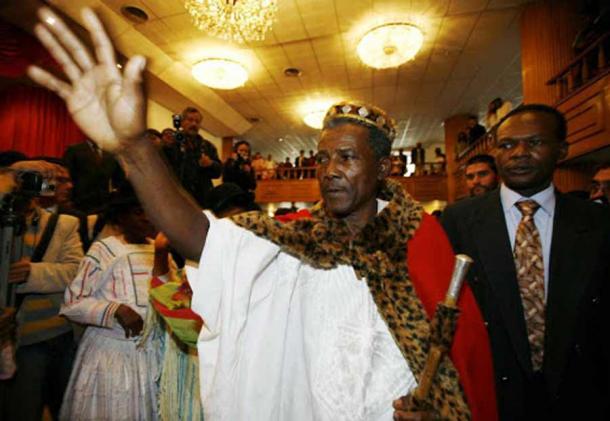
King Julio Pinedo in action in 2020. ( Bean / Twitter)
A Crown Within a Cookie Box
Sadly, Bolivia is a nation still struggling with poverty. The living conditions in many of its rural regions are very difficult and the Afro-Bolivian Yungas area is no exception. There is a struggle with education, literacy, health security, and employment. Most, if not all, Afro-Bolivians are hit hard with these difficulties. Luckily, in recent years, plenty was done to right these wrongs.
<iframe width=”560″ height=”315″ src=”%20
The Afro-Bolivian communities are seeing increased recognition, and continued attempts to improve their economic situation, and their social, political, and cultural rights.
The 23rd of September of every year is Bolivia’s official day of the Afro-Bolivian people. Indeed, the future holds great promise for this illustrious and enigmatic culture and its nearly 200-year-old heritage.
King Julio Pinedo is a humble man. His days in the remote Mururata village are filled with the daily toils of a regular Bolivian farmer. But even with all the poverty surrounding him, Julio is still proud to stand at the head of the Afro-Bolivian community. He understands his position with perfect clarity:
“My title [as king] is mostly symbolic. I’m not like these rich kings of Europe, but I represent the Afro-Bolivian community, and this is a huge responsibility to me .”
As a king, he helps to solve disputes amongst Afro-Bolivians and fights for their rights thereby leading them towards a brighter future. Still, his humility is the defining feature of his character and of this struggling community as well.
Entering his home, one would never suspect that it is in fact a royal residence. And tucked away in a dimly lit back room, carefully packed in a worn-out cookie cardboard box, is an elaborate royal crown with pearls and gems: an irreplaceable physical symbol of the Afro-Bolivians.
Top image: The future of the Afro-Bolivians lies in their children and the leadership and wisdom of their king. Source: Black History Worldwide
By Aleksa Vučković
Related posts:
Views: 0
 RSS Feed
RSS Feed

















 March 18th, 2021
March 18th, 2021  Awake Goy
Awake Goy  Posted in
Posted in  Tags:
Tags: 
















